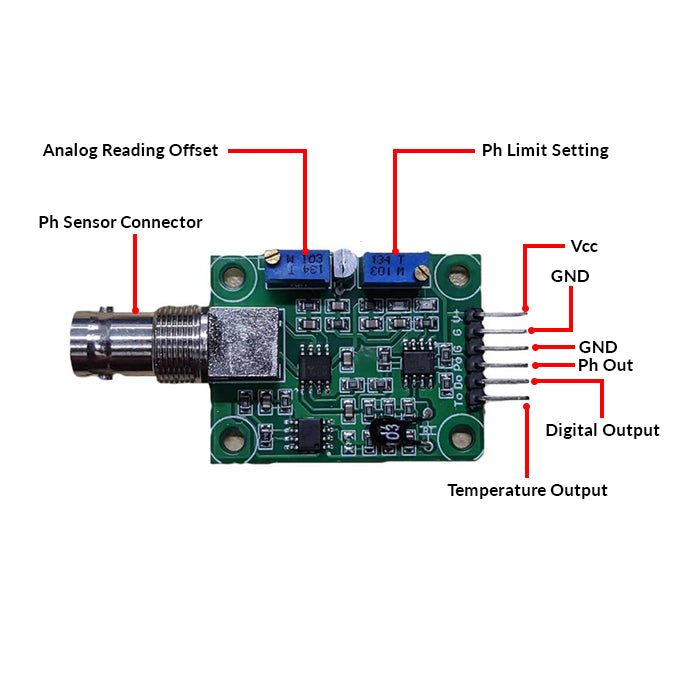 A pH sensor, also known as a pH probe or pH electrode, is an electronic device used to measure the acidity or alkalinity of a liquid solution. Here?s an overview of a typical pH sensor:
A pH sensor, also known as a pH probe or pH electrode, is an electronic device used to measure the acidity or alkalinity of a liquid solution. Here?s an overview of a typical pH sensor:
### Key Features:
– **Measurement Principle**: Measures the hydrogen ion concentration (pH) in a solution.
– **Electrode**: Typically consists of a glass electrode and a reference electrode immersed in the solution.
– **Response**: Produces a voltage proportional to the pH level of the solution.
– **Calibration**: Requires periodic calibration with standard pH solutions (buffers) for accuracy.
– **Interface**: Outputs analog (voltage) or digital signals for interfacing with microcontrollers or pH meters.
– **Range**: Covers a pH range typically from 0 to 14, where pH 7 is neutral, pH below 7 is acidic, and pH above 7 is alkaline (basic).
### Functionality:
– **pH Measurement**: Provides real-time pH readings of the solution.
– **Temperature Compensation**: Some pH sensors include temperature compensation to correct pH readings based on temperature changes.
– **Longevity**: Lifespan varies depending on usage and maintenance, typically several months to years.
– **Maintenance**: Requires regular cleaning and storage in proper storage solution to maintain accuracy.
### Applications:
– **Water Quality Monitoring**: Used in environmental monitoring of lakes, rivers, and wastewater.
– **Aquariums and Hydroponics**: Monitors pH levels in aquatic environments and soilless growing systems.
– **Laboratory**: Essential in chemical and biological laboratories for experimental and analytical purposes.
– **Food and Beverage Industry**: Ensures pH control in food processing and beverage production.
### Example Use:
1. **Setup**: Calibrate the pH sensor using standard buffer solutions.
2. **Measurement**: Immerse the pH sensor in the solution to be tested.
3. **Readings**: Obtain pH readings either directly from the sensor or through a connected pH meter or microcontroller.
pH sensors are critical in various industries and scientific fields for maintaining optimal conditions, ensuring product quality, and conducting accurate research and analysis based on pH-dependent chemical reactions and biological processes.


Reviews
Clear filtersThere are no reviews yet.